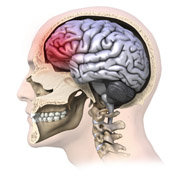Brain, Biology and Behavior, Center for
Date of this Version
11-18-2015
Document Type
Article
Citation
The Author 2015.
Abstract
Early language delay has often been associated with atypical language/literacy development. Neuroimaging studies further indicate functional disruptions during language and print processing in school-age children with a retrospective report of early language delay. Behavioral data of 114 5-year-olds with a retrospective report of early language delay in infancy (N = 34) and those without (N = 80) and with a familial risk for dyslexia and those without are presented. Behaviorally, children with a retrospective report of early language delay exhibited reduced performance in language/reading-related measures. A voxel-based morphometry analysis in a subset (N = 46) demonstrated an association between reduced gray matter volume and early language delay in left-hemispheric middle temporal, occipital, and frontal regions. Alterations in middle temporal cortex in children with a retrospective report of early language delay were observed regardless of familial risk for dyslexia. Additionally, while children with isolated familial risk for dyslexia showed gray matter reductions in temporoparietal and occipitotemporal regions, these effects were most profound in children with both risk factors. An interaction effect of early language delay and familial risk was revealed in temporoparietal, occipital, and frontal cortex. Our findings support a cumulative effect of early behavioral and genetic risk factors on brain development and may ultimately inform diagnosis/treatment.
Included in
Behavior and Behavior Mechanisms Commons, Nervous System Commons, Other Analytical, Diagnostic and Therapeutic Techniques and Equipment Commons, Other Neuroscience and Neurobiology Commons, Other Psychiatry and Psychology Commons, Rehabilitation and Therapy Commons, Sports Sciences Commons


Comments
Cereb Cortex doi: 10.1093/cercor/bhv267 PMCID: PMC5939193 PMID: 26585334 https://www.ncbi.nlm.nih.gov/pmc/articles/PMC5939193/